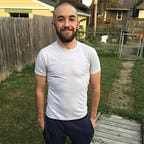HEIDI RESZIES ON THE MAKING OF ‘ILLUSORY BORDERS’ :: FIELD NOTES :: PART TWO: BLUE OPTIMISM
Dear Readers and Fellow Creative Practitioners: welcome back for Part Two of this Field Notes special feature, in which transdisciplinary artist and author Heidi Reszies expands our conception of poetry and poetic process. Read on to learn about camera-less photography, light-writing, cyanotype prints, and how these fascinating practices inspired her forthcoming poetry book, Illusory Borders, which is now available for pre-order. [2018 series editor: Adrian Silbernagel]
About six months or so into writing the poems that became the body of work now titled Illusory Borders, I began experimenting with cyanotype prints. As I’m typing this Field Note, I recall my inspiration, something I’d forgotten until now. While preparing to paint the walls of my son’s bedroom (moving objects/clearing space) I came across his high school photography portfolio, which included a few examples of camera-less photography — photograms in particular, which are made by placing objects on a photosensitive surface and exposing them to light. One of these was a cyanotype print — more commonly known as a blue print or sun print — on a sheet of paper that was obviously commercially-produced (the type you can purchase in a kit from a craft store or online). I’d had some experience, years before, applying liquid photo-emulsion to paper for pinhole photographs, and decided to research the chemistry and process involved in cyanotype printing.
That which takes us by surprise — moments of happiness — that is inspiration. -Agnes Martin
I remember what I can only describe now as a feeling of profound joy as I began my blue experiments. As the process unfolded, each step felt new and familiar at the same time, in a sort of bodily knowing.
Like an alchemist, I began by mixing chemicals, some that required heating or crushing with a mortar and pestle. Then, with a soft-bristled brush, I applied a thin wash of emulsion (equal parts of potassium ferricyanide and ferric ammonium citrate solutions, with a bit of citric acid) onto sheets of paper (vellum surface Strathmore bristol and Fabriano Rosaspina printmaking paper) — all of this after dark, in a spare bedroom, where I could leave the paper to dry under the bed until morning.
My first test print was on a postcard-size piece of paper, which I tucked under my shirt in order to block the sunlight while I quickly gathered a few sprigs of parsley in the garden (leaves and flower/seed heads), then set paper with my plant material arranged on top in a sunny spot for several minutes. After the appropriate exposure time, I brought the paper indoors to be rinsed in the kitchen sink; what resulted was the white silhouette of parsley against the most intense Prussian blue. I dove deep into this hue and was reminded of a song lyric — from Björk’s The Anchor Song — I dive into it / down to the bottom / underneath the currents / and drop my anchor / this is where I’m staying / this is my home.
My test print was just the beginning. Soon I had incorporated an almost daily practice of creating cyanotypes — a ritual of painting, drying, arranging, washing, drying… On sunny days, when I was not making poems, I was writing with light (photo-graph) — my poiesis took the form of blue impressions.
(next — Field Notes, Part Three: Moon & Moon)
Heidi Reszies is a poet and transdisciplinary artist. She is the author of three chapbooks; her poetry and poetics have appeared in journals including The Volta, La Vague Journal, Forklift Ohio, Gramma, BOAAT, LEVELER, Salt Hill, SUSAN/the Journal, and Queen of Cups. She is the founding creator/curator of Artifact Press, and currently resides in Richmond, Virginia. Find her at heidireszies.com
